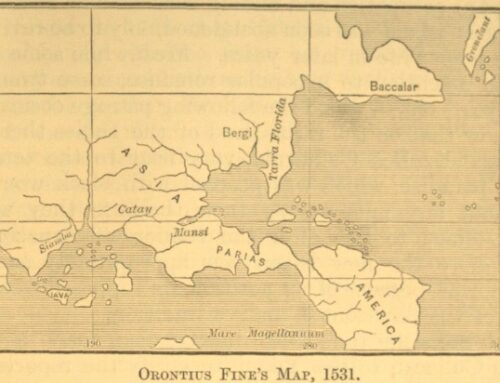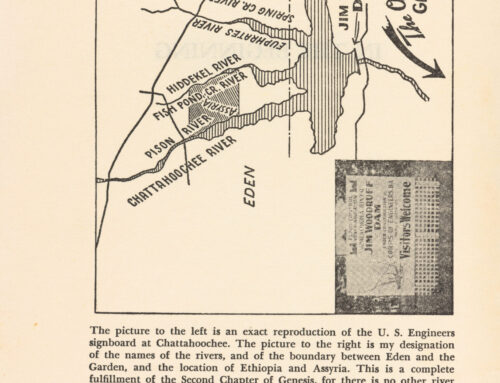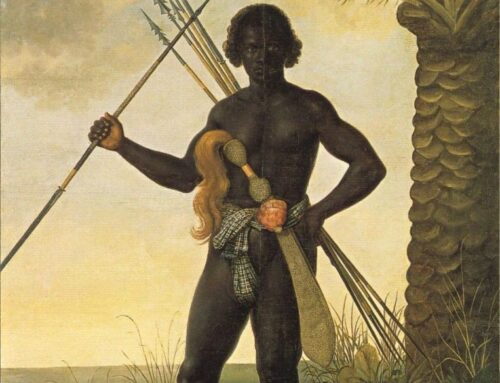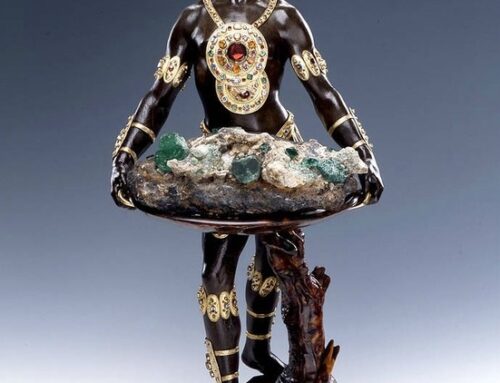









The Phoenicians are from the Americas, is a necessary blog post to settle the debate as to whether the Moors are indigenous to the Americas or not, and to demonstrate that America is the true old world, since the Phoenicians history stretches back more than 7000 B.C., who were a seafarer people that settled the coast of Lebanon around 3000 B.C.
If it can be proven that the Phoenicians are from the Americas then no one can say that the Moors are invaders, since Phoenicians were Biblically known as Canaanites (Canaan), who has a son of Ham in the Bible. The Moors were also known as the Canaanites. In fact, in 1913, Noble Drew Ali formed the Canaanite Temple in Newark, New Jersey.
The Phoenicians were Blackamoors (see post image) that were sea people or people of the waters, meaning they were merchant Moors, mariners, and marines: https://www.facebook.com/Americaisthetrueoldworld/posts/4743802059017390.
WHAT WERE THE PHOENICIANS KNOWN FOR?
The people known to history as the Phoenicians occupied a narrow tract of land along the coast of modern Syria, Lebanon, and northern Israel. They are famed for their commercial and maritime prowess and are recognized as having established harbors, trading posts, and settlements throughout the Mediterranean basin.
The Phoenicians were also known for producing and trading Royal Purple or Tyrian Purple. “Tyrian purple (Ancient Greek: πορφύρα porphúra; Latin: purpura), also known as Phoenician red, Phoenician purple, royal purple, imperial purple, or imperial dye, is a reddish-purple natural dye; the name Tyrian refers to Tyre, Lebanon. It is a secretion produced by several species of predatory sea snails in the family Muricidae, rock snails originally known by the name ‘Murex’. In ancient times, extracting this dye involved tens of thousands of snails and substantial labor, and as a result, the dye was highly valued. The main chemical is 6,6′-dibromoindigo.”
Royality and the high priest of Anu (Maurs) wore Phoenician Purple or Royal Purple because it was for the elite class since it was so expensive and hard to make. Purple, being a combination of red (positive energy) and blue (negative energy) is the highest color spectrum of light at the crown chakra, i.e., the most high. Eventually, Royal Purple was replaced with more of a scarlet red or a cherry red color, since it was easier to make and less expensive to produce. The high-ranking Cardinal Catholic priests still wear this red, and this red is also the same color used for the famed, “RED CARPET,” for the brightest stars that receive the Oscar (Osiris/ Ptah) award.
ARE THE PHOENICIANS MENTIONED IN THE BIBLE?
Yes. The Bible refers to the Phoenicians as the “PRINCES OF THE SEA” in a passage from Ezekiel 26:16 in which the prophet seems to predict the destruction of the city of Tyre and seems to take a certain satisfaction in the humbling of those who had previously been so renowned.
DID THE PHOENICIANS DISCOVER THE AMERICAS FIRST?
Yes, because whenever you have a strong theory like the “Theory of Phoenician Discover of the Americas,” that is supported with convincing evidence of Phoenicia being in the Americas, the theory now becomes a fact: https://en.wikipedia.org/wiki/Theory_of_Phoenician_discovery_of_the_Americas. Yes, the Phoenicians discovered the Americas first, since the Phoenicians are from the Americas and have always been here. This post proves that ancient Phoenicia was in the Americas as you read on, so enjoy.
According to “The Book of the Indians of North America,” by Samuel G Drake, in 1872, the Paraibra stone found in Brazil, South America, written in the same language as Phoenicians, describes a crash landing on the shores of Americas:
Translation: “We are children of Canaan from Sidon of the Eastern Kingdom of Merchants and are cast, I pray, here beside a central land of mountains (with this) offered choice gift to the Most High Gods and Goddesses in year 19 of King Hiram, I pray (still) strong, from the valley of Ezion-geber of the Red Sea. Thereby (we) journeyed with 10 ships and we were at sea together assuredly two years around the land of Ham. We were separated by the hand of Baal and no longer remained among our companions, I pray, we have come here, 12 men and 3 women at this new land. Devoted, I make, even whom men of wealth bow the knee, a pledge to the Most High Gods and Goddesses (with) sure hope.”
We have a Sedona (sidon), Arizona in America that was originally settled by the Phoenicians. Supposedly it’s in the 33rd parallel. Named after other Phoenician cities (Sidon, Sidonia, etc.,). We also have a Phoenix, Arizona, which is also named after the Phoenicians, who were the Biblical Canaanites. The name “Phoenician”—and “phoenix,” the legendary bird reborn in the flames— is derived from the Greek phoinix, meaning “purple-red.” The word “Canyon,” as in the Grand Canyon in Arizona is a derivative of Canaan, which is another connection to the Phoenicians.
Murex comes to us from Latin, derived from the Greek muax, or “purple fish.” It was the Phoenicians who developed and promoted the Mediterranean murex market. “Purple dye made by Murex Shells is a tradition still carried on today in Oaxaca Mexico and Guatemala in the Yucatan. Diodorus Siculus says that “Some Phoenicians were cast upon a most fertile island opposite Africa.” Of this he says kept the most studied secrecy, which was doubtless occasioned by their jealousy of the advantage the discovery might be to the neighboring nations, and which they wished to secure wholly unto themselves.” ~ The Book of the Indians of North America
By Samuel G Drake, 1833.
In this post is a map comparison of a modern map from 2020 of Europe, the Middle East, and North Africa with a 1606 map of Central America and the Gulf of Mexico. As you can see, the landmasses also look identical. Too much to be just a mere coincidence, so this was all done by design by our ancestors who were very advanced people that built the promised land on both sides of the world, using the Americas as their model. By looking at the side-by-side map comparison of the post image you can see the ancient Phoenician Sea Port of Cartago/ Carthage found in Central America and in Spain. Yes, Carthage was on both sides of the world. You can also see Italy (Atalya) and Spain (Leon) on both maps. But what better place to set a trading post than where the 2 great oceans meet and near the Panama Canal? Which explains why the people of Carthage (the Naga-Maya) built their sea port near the tip of the Yucatan.
The Carthaginians were a branch of the Phoenicians that were ancient Romans from Tunis (Tennessee) before a civil war occurred between Carthage and Rome that broke up their empire. Evidence that Tennessee is Tunis: https://www.americaistheoldworld.com/the-ottoman-empire-in-the-americas/.
Tunisia, a once wealthy port city, is famous for having been one of the sites of the ancient Phoenician civilization and was a premier destination for travelers heading to Carthage [Carthage, Tennessee?]. North America has 15 Carthage place names, which suggests that Grand Tunis and Grand Phoenicia were in the Americas. Yes, the Phoenicians are from the Americas. In Columbia, South America there is a city named Cartagena, Columbia; likewise, in Spain there is a city called Cartagena, Spain. These cities were obviously named after the Carthaginians.
American Indian Tradition of Dyeing is the same as the Phoenicians:
However, not much evidence of this dyeing process has been found in Europe, Africa, or Asia. There are many theories on how they did it and where, but no solid evidence pointing to mass production in this fashion.
Where can one find this evidence? Only in America, where the tradition is still carried on in Oaxaca and Guatemala, Mexico to this day.
The question is: Did the Phoenicians bring their Industry to America to export overseas? Or was the industry already in America and later exploited by the Phoenicians? My money is on the latter. As it was known in the Old World that the Phoenicians lived on a fertile island opposite Africa. “Diodorus Siculus says that ‘Some Phoenicians were cast upon a most fertile island opposite Africa.’ Of this he says kept the most studied secrecy, which was doubtless occasioned by their jealousy of the advantage the discovery might be to the neighboring nations, and which they wished to secure wholly unto themselves.” The Americas is the opposite of Africa, which makes the Americas home of the Phoenicians.
The biggest proof to me, however, is how American Indians are world renown for their Dyeing. From the tip of South America to North America, the process of creating dyes was important to nearly all cultures. This led to the creation of the world’s strongest and longest lasting dye: Maya Blue, otherwise known in the old world as indigo. Tyrian Purple is a very strong dye. But it has Nothing on Maya Blue. Another ancient Egyptian connection is Maya Blue, since the Egyptian royal blue is the Maya Blue.
Florida is also covered in Venetian (Phoenician) Gothic Architecture. Some examples of this Venetian Gothic Architecture are the “Royal Poinciana (Phoenician) Hotel” in West Palm Beach Florida that was allegedly built by Henry Morisson Flagler (son of a Moor) in 1893 and demolished in 1935. This was the largest wooden building in the world when it was demolished and it was made out of Cypress wood, the second most expensive wood in the world, a type of wood that was sacred and cherished by the Phoenicians: https://rb.gy/hoe6qq.
More Venetian Gothic Architecture can be seen at the Ponce de Leon Hotel in Saint Augustine, Florida. Previously, I did a blog post entitled, “Imperial Rome and Italy Superior,” that demonstrates that the Naga-Maya were the Phoenicians that established La Florida. This post also demonstrates that the original Africa was in South America and that Florida was an extension of North Africa. This post also goes in depth more on the Phoenicians and how they established Imperial Rome and Italy Superior in the Americas: https://www.americaistheoldworld.com/imperial-rome-and-italy-superior/.
Gothic Architecture (Castles and Cathedrals), which is a Tartarian or a Moorish mode or workmanship, according to the master textbook, “A Dictionary of the Architecture and Archaeology of the Middle Ages.” Yes, the Tartarians (Muurs/ Moors) built all of the Castles and Cathedrals throughout the whole, which became College Universities, since Gothic Building is a Moorish style of building. The Cathedral is built with a Gothic (Moorish/Islamic) type of building and so is Westminster Abbey: https://bit.ly/2FfPSlC.
Notice how in the link that you see on the left-hand side towards the bottom of the page, “In Turner’s Normandy, vol. ii. p. 250, are delineated several sculptural spandrels from Bayeux Cathedral, exhibiting somewhat of the Moorish or Tartarian, mode of workmanship. The word is spelt spaundre in the French Contract for reforming Westminster Hall,” dated 1393. – “A Dictionary of the Architecture and Archaeology of the Middle Ages.” Now, this is a powerful quote coming from a master textbook written by a white author that is recognized. Well, it appears that the Moors built the Castles and Cathedrals throughout Europe and the Americas.
ARE PHOENICIANS ANCIENT EGYPTIANS?
Though nominally under Egyptian rule, the Phoenicians had considerable autonomy and their cities were fairly well developed and prosperous. They are described as having their own established dynasties, political assemblies, and merchant fleets, even engaging in political and commercial competition amongst themselves. Based upon the evidence, we can say, yes… the Phoenicians were ancient Egyptians since they ruled Egypt during one point in time.
While in Egypt the Phoenicians developed the meroitic script, which is Egyptian since it is derived from Egyptian Hieroglyphics according to Wikipedia: “The Meroitic script consists of two alphasyllabaric scripts developed to write the Meroitic language at the beginning of the Meroitic Period of the Kingdom of Kush. The two scripts are Meroitic Cursive derived from Demotic Egyptian and Meroitic Hieroglyphics derived from Egyptian hieroglyphs.” [End quote from: https://en.wikipedia.org/wiki/Meroitic_script ].
According to Dr. Alim El Bey, the Algonquin tribes (American Indians) spoke Egyptian, and Hebrew and Arabic are the same language, but only with a different dialect. Please watch his video here: “The Indigenous Algonquin Tribes Spoke Egyptian (Ta Meri-An)-Phoenician Language”: https://www.youtube.com/watch?v=VRbWa0PvoSw.
The fact that the Algonquin tribes spoke Egyptian is more evidence proving that Ancient Egypt was in the Americas: https://www.americaistheoldworld.com/ancient-egypt-was-in-the-americas/. The Moors became the custodians of the Egyptian Mysterious when Egypt fell according to the book, “Stolen Legacy,” by George G. James. Maur means a “high priest of Anu,” according to a book called, “The Teachings of Ptahhotep the oldest Book in the world,” by Asa G. Hilliard (see post image of Maur Hieroglyph).
In this post is the Maur Hieroglyphic from the Palermo Stele in ancient Egypt. As you can see the Owl and the serpent/ dragon represents the Maur and the term Maur in Egyptian means a High-Priest of Anu. The owl and the dragon/ serpent are also flag symbols of Tartary (Tartaria), and those symbols represent the wise ones who know who; and supervision since owls can rotate their heads 360 degrees. The dragon has always been associated with great wisdom and power (free energy). Please read more about Tartary since America was Grand Tartary: https://www.americaistheoldworld.com/grand-tartary-was-in-north-america/
Dr. Alim El Bey, goes on by proving in the said video, which is imbedded in this post for your viewing convenience, that the meroitic script is the origin of Arabic, Hebrew, Latin, and the Greek language. I agree with him since phonics (Hooked on Phonics), or phonetics (phonetically) is dealing with pronunciation of sounds to create words or language. Words like “phonics” and “phonetics,” etymologically and phonetically, have Phoenician written all over them, which suggests that the Maurs (High priest of Anu) as your first merchants and mariners invented all of your scholarly languages such as Arabic, Hebrew, Greek, and Latin.
UPPER PHOENICIA WAS IN ANTARTICIA:
The Phoenicians where ancient Egyptians since their meroitic script is Egyptian in origin. Additionally, Antarctica has a three-pyramid alignment just like the one in Egypt (see post image). One of these three pyramids is called the “Moore pyramid.” Here are four more three-pyramid alignments, which demonstrate that Egypt, aka, Atlantis (Tartaria) was a global Empire: https://www.facebook.com/Americaisthetrueoldworld/posts/1960125810718376. This makes a total of five three-pyramid alignments that align with the constellation of Orion (Osiris, the mighty hunter).
Here is a 1605 world map by Joseph Hall from Brown University that shows Phoenicia in Antarctica, and this map shows Antarctica without any icecap: https://www.brown.edu/Facilities/John_Carter_Brown_Library/exhibitions/mapexhib/Images/large/item9.jpg.
Yes, Antarctica used to be an extension of the Americas since it was once attached to South America, and it used to be a Holy land (Terra Sancta), before the polar ice cap. Near Terra Sancta is Phoenicia, which is at the midway point of the upside-down Y-shaped canal on the map. Canada was also the land of Canaan, and there were Phoenicians. The Mayans were also Phoenicians. Please read more about Canaan (Phoenicia), by reading my blog post, “Old Canaan in the New World:” https://www.americaistheoldworld.com/old-canaan-in-the…/, since all of this information ties right in.
In this post is another 1605 map by Joseph Hall of Pangea (Supercontinent) makes more sense, because it shows you the Arctic North pole, aka, Mount Meru, as the center or source of Creation, aka, the Garden of Eden, which makes perfect sense because creation starts from the inside of the center Source, or the womb of creation know as Mother Mary or Mount Meru. Yes, X marks the spot. Notice the X, the cross, or the Swastika pattern (all one and the same symbol) that forms the Garden of Eden located at Mount Meru (Mu), the mother/ motor, or the Arctic North pole: https://www.americaistheoldworld.com/the-true-meaning…/
Also, in this post is the controversial “Piri Reis Map of 1513,” which shows Antarctica still attached to South America with no icecap formed yet. Piri Resi was a Moor or Turk that was a map geographer from the Ottoman Empire (Turkey), which was in the Carolina’s (North & South Carolina): https://www.americaistheoldworld.com/ancient-turkey-was-in-south-carolina/.
In this post are three old-world maps that show Antarctica still attached to South America with no icecap formed yet. According to the Bible and Common Law, “The Testimony of two or more witnesses is truth in commerce.” This is especially true when the testimony of the witnesses’ interlocks. Interlocking testimony is when the witnesses verify each other’s testimony by saying the same thing or presenting the same facts. The three maps in this post interlock, since they all show you, Antarctica is still attached to South America with no icecap formed yet.
I have presented three old-world maps that show Antarctica without any ice, when geologists tell us that it took millions of years for Antarctica to form its icecap. Who are you going to believe? Are we going to believe the old maps or the lies we have been taught in school? The choice is yours. I believe the evidence (map and pyramids) over any educated guess (theory), since I have 8 maps that show Antarctic still attached to South America with no icecap formed yet.
Another interesting thing about the Phoenicians is that they established Europe, according to the book, “The Phoenician Origin of Britons, Scots, and Anglo-Saxons,” by L.A. Waddell (see book image). This means that the bloodlines of the Black Nobility in Europe come from the Americas, which is the true old world.
LOWER PHOENICIA WAS IN NORTH AMERICA:
If you have not already read my blog post above, “Old Canaan in the New world,” please do so, because the information proves that Lower Phoenicia was in North America: https://www.americaistheoldworld.com/old-canaan-in-the-new-world/.
The Phoenician culture was largely centered in Lebanon. With coastal cities like Tyre, Beirut, Byblos and Tripoli, the country proves a strategic location for sea-based trade. Lebanon’s history stretches back into the mists of time. Lebanon means, “the land of the Phoenicians.” The Phoenicians were the navigator founders of Carthage, land of great kings and heroes, major cities and ports and the scene of many Biblical stories. North America has 29 Lebanon place names and 13 Damascus place names, which suggests that the greater Lebanon (greater Phoenicia), Iraq, and Damascus (Syria) was in the Americas.
We also have Phoenicia, New York. Phoenicia is a hamlet of Shandaken in Ulster County, New York, United States. The population was 309 at the 2010 census, making it the highest populated community in the town. Notice that the Phoenicia in New York is a HAM-let of Ulster County. I put emphasis on Ham, because Ham is the oldest son of Noah and the father of Cush. Ham also means Black or Negro.
Based upon all of the evidence and the facts stated herein, how can anyone call America the New World, when the history of the Phoenicians goes back to over 9,000 years, and how can anyone claim that Moors are foreign invaders when the Phoenicians were Blackamoors? Please comment below to tell me how you feel. Thank you reading and God bless you and yours. Peace.












[…] “Teotihuacan is the home of Thoth). In addition, the Phoenicians are also from the Americas: https://www.americaistheoldworld.com/the-phoenicians-are-from-the-americas/. These Naga-Maya (Phoenicians/ Atlanteans/ Egyptians) came to Florida and built the Moorish/ […]
[…] “Teotihuacan is the home of Thoth). In addition, the Phoenicians are also from the Americas: https://www.americaistheoldworld.com/the-phoenicians-are-from-the-americas/. These Naga-Maya (Phoenicians/ Atlanteans/ Egyptians) came to Florida and built the Moorish/ […]
[…] The Phoenicians were initially the Naga-Maya (Mayans) that civilized the world after their home Teotihuacan (the capital of Atlantis) had sunk (see blog post, “Teotihuacan is the home of Thoth). In addition, the Phoenicians are also from the Americas: https://www.americaistheoldworld.com/the-phoenicians-are-from-the-americas/. […]